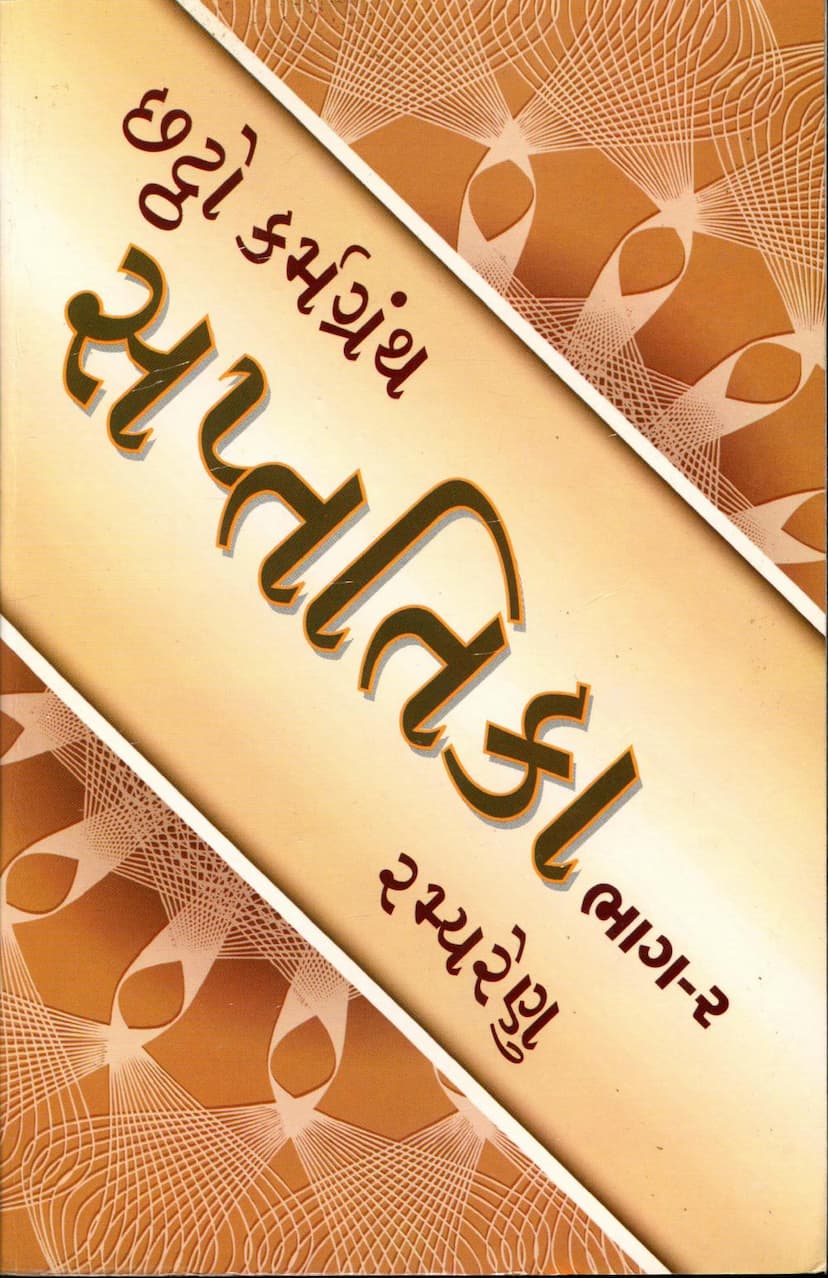Saptatika Part 02 Shashtam Karmgranth
Added to library: September 2, 2025

Summary
The book "Saptatika Part 02: Shashtam Karmgranth" by Ramyarenu, published by Shri Umra Jain Shwetamber Murtipujak Sangh, Surat, is a detailed Jain text focusing on the intricacies of karmic science (Karmagranth). The second part of the "Saptatika" series, this volume specifically delves into the sixth Karmagranth, which is a foundational text in Jain philosophy for understanding the nature, bondage, manifestation (Uday), and persistence (Satta) of various karmic types.
Key Aspects Covered:
-
Comprehensive Karmic Analysis: The book meticulously explains the "Saptatika" (sevenfold classification) of karmas in Jainism, detailing the "Shashtam Karmagranth," which is likely a traditional classification or section within the broader Karmic literature. It seems to focus on the permutations and combinations of karmas across different life forms (Jiv Sthanak), stages of spiritual development (Gunsthan), and states of existence (Margana).
-
Detailed Breakdown of Karmic Principles: The text appears to go into a granular level of detail regarding:
- Bandh Sthan (Places of Bondage): Where and how karmas are bound.
- Uday Sthan (Places of Manifestation): When and how karmas manifest their effects.
- Satta Sthan (Places of Persistence): Where and how karmas remain in persistence (Satta).
- Samyog (Conjunctions/Combinations): It analyzes these karmic states in conjunction with various categories such as:
- Jiv Sthanak (14 Life Forms): Covering the karmic implications for different types of beings from one-sensed beings (Ekendriya) to fully developed five-sensed beings (Panch-endriya), including different stages of development (Paryapt/Aparyapt).
- Gunsthan (14 Stages of Spiritual Progress): Detailing how karmic manifestation changes through the progressive stages of spiritual purification, from the lowest (Mithyatva) to the highest (Yathakhyat Charitra and Sayogi/Ayogi Kevali).
- Margana (62 Paths of Investigation): Examining karmic states across various modes of existence, sensory capabilities, mental states, stages of development, vows, passions, knowledge, perception, and life conditions.
-
Specific Karmas Discussed: While the full breadth of all eight karmas might not be covered in this specific volume (as it focuses on the 'Shashtam Karmagranth'), it appears to extensively discuss:
- Namkarma (Name Karma): This is a significant focus, with detailed analysis of its various subdivisions (Prakriti), their bondage, manifestation, and persistence across different life forms, spiritual stages, and conditions. The book delves into the vast number of permutations (Samyog) of Namkarma, particularly highlighting the complexities of its bondage and manifestation.
- Mohaniya Karma (Deluding Karma): This karma, responsible for passions and obscuring true perception, is also a major topic, with detailed sections on its bondage, manifestation, and persistence through various stages.
- Darsanavarniya (Perception-obscuring Karma): Discussed in relation to its manifestation across different categories.
- Vedaniya Karma (Feeling Karma): Analyzed in its various aspects.
- Ayushyakarma (Life-span Karma): Examined in relation to its karmic states.
- Gotra Karma (Status Karma): Covered in its various permutations.
- Jnanavarniya (Knowledge-obscuring Karma) and Antaraya Karma (Obstructing Karma): These are also analyzed in conjunction with the other categories.
-
Detailed Mathematical/Logical Analysis: The text is highly analytical, presenting a vast number of "Samyog" (combinations) and "Bhangan" (permutations/cases) for the manifestation and persistence of karmas. The extensive tables and lists of these combinations suggest a deep dive into the complex calculations and logical frameworks used in Jain karmic theory.
-
Biographical Tribute: The book includes a heartfelt tribute to Pujya Chandrayashvijayji Maharaj Saheb, detailing his life, spiritual journey, ascetic practices (tapas), devotion, and eventual departure. This suggests the book is also intended as a dedication or memorial to this esteemed Jain monk, highlighting his exemplary life as a model for spiritual seekers.
-
Structure and Content: The table of contents reveals a systematic approach, moving from fundamental karmic bondage (Mulkarma) to more subtle classifications (Uttar Prakriti) and then analyzing their manifestation and persistence across the different categories mentioned above (Jiv Sthanak, Gunsthan, Margana). The latter part of the book, indicated by the extensive tables and analysis of 'Uday Bhangan' and 'Bandh Bhangan', focuses heavily on the intricate details of karmic permutations.
Overall Purpose and Significance:
"Saptatika Part 02: Shashtam Karmagranth" is a scholarly and deeply technical work intended for serious students of Jain philosophy and karmic science. It aims to provide a thorough understanding of how karmas operate across the vast spectrum of existence and spiritual progression. The dedication to Param Pujya Chandrayashvijayji Maharaj Saheb adds a layer of reverence and personal connection to the vast theoretical knowledge presented. The book serves as a resource for mastering the complex doctrines of Jain karmic theory, offering a systematic and analytical approach to this essential aspect of the faith.